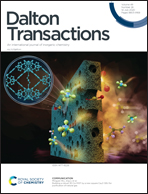A novel HCV electrochemical biosensor based on a polyaniline@Ni-MOF nanocomposite†
Abstract
Hepatitis-C virus ribonucleic acid (HCV-RNA) recognition and quantification based on real-time polymerase chain reaction (RT-PCR) is key to infection control, management, and response to treatment due to its specificity, sensitivity, and quantification capabilities. However, the high cost, time requirements, and need for sophisticated laboratory infrastructure have limited the use of this method in rapid screening, blood banks, and point-of-care testing (POCT). In this work, a novel label-free electrochemical biosensor constructed using a polyaniline@nickel metal–organic framework (Ni-MOF) nanocomposite was developed for direct detection of unamplified HCV nucleic acid. A robust biosensor was fabricated using smooth layer-by-layer deposition of the polyaniline@Ni-MOF nanocomposite, deoxyribonucleic acid (DNA) probe, and bovine serum albumin (BSA) onto a glassy carbon electrode (GCE) and was subsequently monitored real-time via cyclic voltammetry (CV) and electrochemical impedance spectroscopy (EIS). The sensitivity and specificity of the newly developed biosensor were specifically examined using the EIS approach. The results revealed that the novel biosensor is highly efficient in quantitative sensing of the HCV target in the presence of nonspecific nucleic acids over the range of 1 fM–100 nM with a detection limit of 0.75 fM (at a S/N ratio of 3). To the best of the authors’ knowledge, the proposed biosensor is superior to other MOF platforms. These research findings are expected to have a positive influence on the quantitative detection of HCV RNA and other nucleic acids by offering exceptional accuracy and cost effectiveness, especially in low resource countries. Moreover, this biosensor could be simply adopted for full automation and used in point-of-care testing.



 Please wait while we load your content...
Please wait while we load your content...